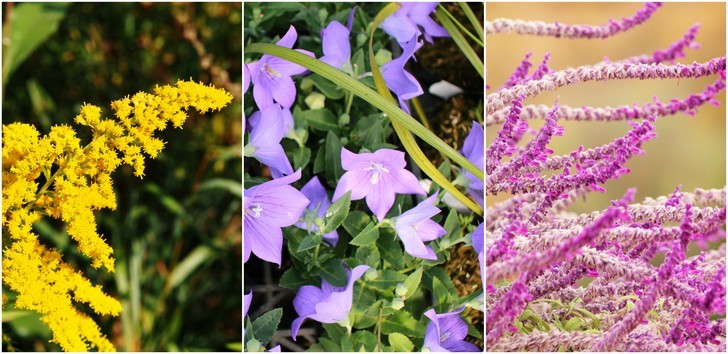Fall is the perfect time to plant perennials if you want a gorgeous colorful garden next spring. The cool temperatures and increased moisture in autumn help new perennial plants establish deep roots before going dormant for the winter. This gets them ready to thrive when spring arrives.
When choosing perennials to plant in fall, focus on ones with early season blooms or attractive foliage so you’ll have plenty of curb appeal and color right from the start of spring. Some excellent options include:
Spring-Blooming Bulbs
Spring flowering bulbs like tulips daffodils and hyacinths are ideal for fall planting. Their bloom times range from early to late spring depending on the variety. Plant the bulbs in autumn at least 6 to 8 weeks before the ground freezes. This allows time for the bulbs to establish roots. Well-rooted bulbs produce more spectacular flowers in spring.
Popular spring blooming bulbs to plant in fall include:
-
Tulips – These classic spring flowers bloom in a huge range of colors. Plant in full sun.
-
Daffodils – Cheery yellow blooms are among the earliest flowers in spring. Plant in full sun to part shade.
-
Hyacinths – Extremely fragrant flowers in shades of pink, purple, white, and blue. Plant in full sun to part shade.
-
Crocuses – Delicate purple, yellow, and white blooms that handle light snow cover Plant in full sun.
Early Blooming Perennials
Many perennials bloom in very early spring, often weeks before most other plants. Getting them planted in fall ensures a fantastic flower show as soon as winter ends. Excellent choices include:
-
Hellebores – Also called Lenten Rose, they produce gorgeous drooping flowers as early as February in shady areas.
-
Primroses – Ground hugging primroses thrive in shade and bloom profusely in March and April.
-
Creeping Phlox – This early spring bloomer thrives in full sun and provides a carpet of bright flowers.
-
Bleeding Hearts – Old fashioned favorites with dangling pink and white blooms in April and May. Require shade.
Foliage Perennials
Some perennials are grown mainly for their attractive foliage that looks fresh and colorful right from early spring onwards. Some top choices include:
-
Coral Bells – Prized for their vivid red, orange, gold, or chartreuse leaves. Grow in partial shade.
-
Lamb’s Ear – Has soft, velvety silver-gray foliage. Thrives in full sun.
-
Ajuga – Features splashes of pink, white, blue, and purple on bronze foliage. Grows in shade.
-
Sedums – Succulent foliage comes in shades of green, red, purple, and variegated. Prefers full sun.
-
Creeping Jenny – Vigorous bright chartreuse foliage thrives in sun or shade.
Long Blooming Perennials
Some perennials flower for many months, providing color from spring through fall. Getting them planted in autumn means you’ll get even more bloom time the following year. Excellent long blooming choices include:
-
Daylilies – Each flower only blooms for a day but plants produce buds for months on end. Grow in full sun.
-
Coneflowers – Brilliant daisy-like flowers bloom for months on sturdy plants. Prefers full sun.
-
Geraniums – Available in many colors, geraniums bloom steadily from late spring until frost. Grow in full sun to part shade.
-
Salvia – Spikes of small flowers bloom all season on disease resistant plants. Prefers full sun.
-
Russian Sage – Airy purple flower spikes complement silver foliage through summer and fall. Grow in full sun.
Deer Resistant Perennials
If deer frequent your yard, focus on planting perennials that they don’t find tasty. Excellent deer resistant choices for fall planting include:
-
Lavender – Deer hate the fragrant foliage and flowers. Requires full sun and good drainage.
-
Foxglove – Poisonous flowers mean deer and other animals avoid this plant. Grows well in part shade.
-
Fern – Deer don’t eat ferns due to their coarse fronds. Plant in partial to full shade.
-
Yucca – Unpalatable sharp leaves deter deer. Thrives in full sun.
Fall Planting Tips
Follow these tips when planting perennials in fall for best results:
-
Prepare the planting beds well by loosening soil and mixing in compost or other organic material.
-
Water new plants well after planting and continue regular watering the first month.
-
Apply a 2 to 3 inch layer of mulch around plants to retain moisture and discourage weeds.
-
If rabbits or deer are a problem, protect plants with fencing until they are established.
-
Wait until 6 to 8 weeks before your area’s first frost date to begin fall planting.
With proper planning and preparation, the perennials you plant this fall will reward you with a magnificent spring garden filled with flowers and foliage. Use this list to help select beautiful carefree plants suited to your growing conditions.

Why Fall Is The BEST Time to Plant Perennials
FAQ
What is the best perennial to plant in the fall?
- #1 Symphytotrichum novae-angliae: New England Aster
- #2 Verbena hastata: Blue Vervain
- #3 Solidago casesia: Blue-stemmed Goldenrod
- #4 Symphytotrichum laterifolium: Calico Aster
What are the best perennials to plant in autumn?
A well-known perennial to plant during fall is black-eyed Susan (Rudbeckia hirta). The low-maintenance native plant produces bright yellow blooms that bloom in late spring and continue into fall. Some varieties like Early Bird Gold will bloom earlier in the season.
What is the latest you can plant perennials in the fall?
Finally, consider your local climate to ensure your perennials have enough time to establish themselves before winter arrives. Try to plant at least a month before the average date of the first fall frost.
Is it okay to plant perennials in September?
Planting perennials in September is a savvy move for any garden enthusiast looking to enjoy a vibrant spring garden. By choosing varieties like Daylilies, Garden Phlox, Coneflower, Russian Sage, and Sedum, you ensure that your garden will burst into life with spectacular blooms come spring.
